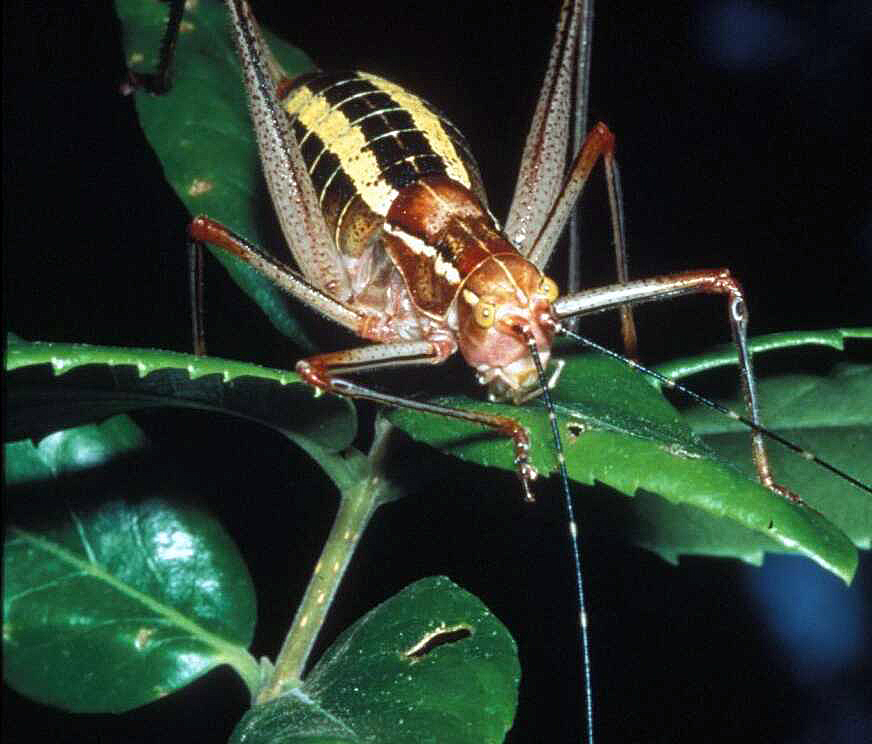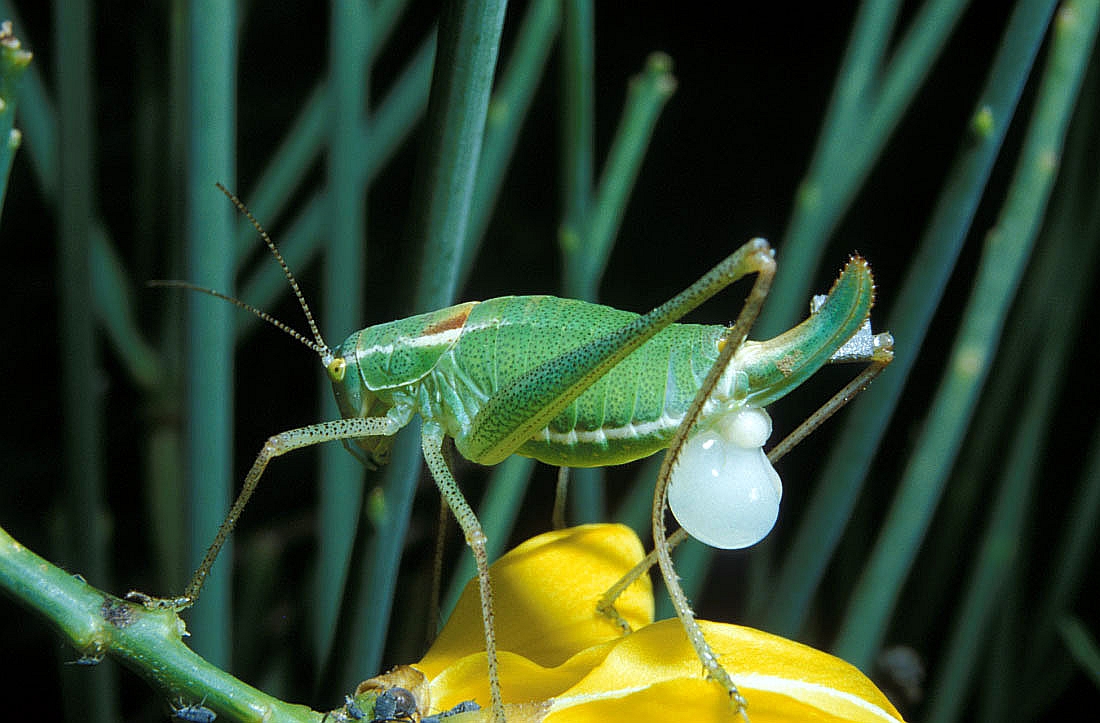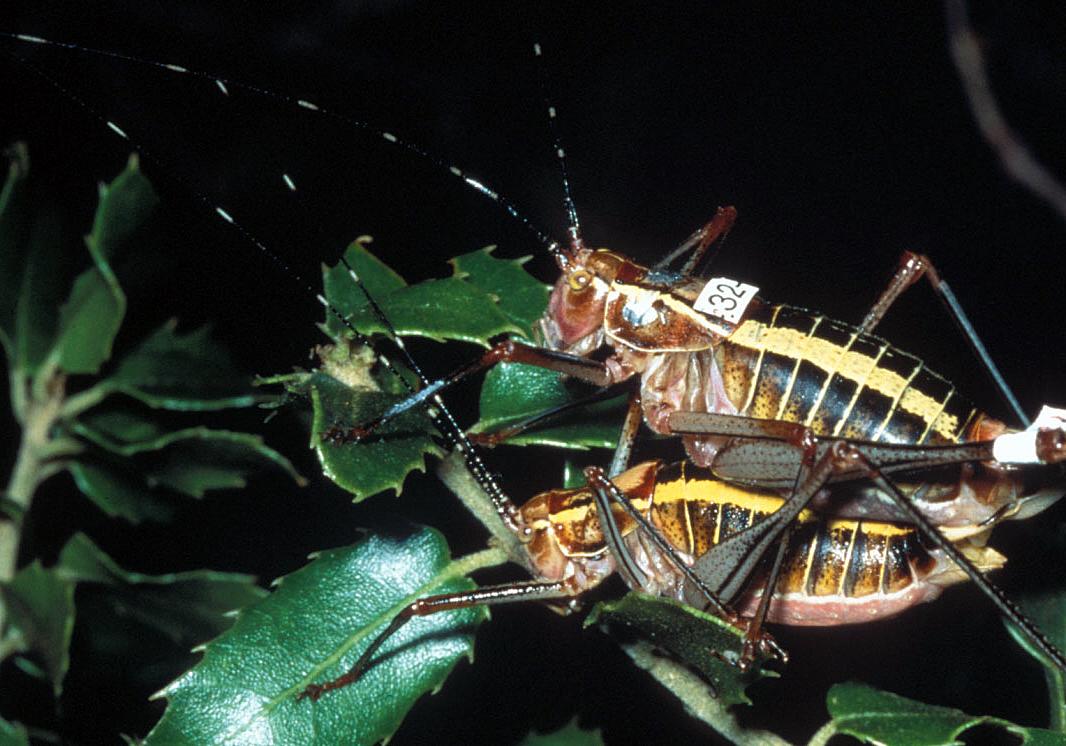The Way to a Female Katydid's Heart? Offer Her Food

A tasty gift may be all it takes to lure a female bushcricket into the sack. New research suggests that in bushcricket species in which the males offer particularly large food gifts to a prospective mate, the females are willing to do the chasing.
In most, but not all, species of bushcrickets (also known as katydids), the female searches for a partner, while the male emits mating calls.
Researchers wondered why the gender of the searchers would differ between closely related species. They discovered that in role-reversal species, males lure females into searching them out by producing larger food gifts.
The nuptial gift

The food gift is part of what is called a spermatophore, which contains the sperm and ejaculate encased in an outer, protective covering called the spermatophylax.
The spermatophore provides a source of nutrients for the female and (if the gift is big enough) her offspring too, study researcher Jay McCartney of Massey University in New Zealand told LiveScience in an email. [See images of the bushcrickets and their spermatophores]
The researchers studied the males of 32 different species of Poecilimon bushcrickets. The researchers weighed them and studied the size of their spermatophore and its components.
Sign up for the Live Science daily newsletter now
Get the world’s most fascinating discoveries delivered straight to your inbox.
Mates with benefits
In those species with the larger gifts, the females were the searching sex, they found. McCartney believes the female searches more when the males of her species give a large gift because the benefit of the easily obtained food is worth the risk of predation the females face while emitting an attractive call used to seek an available male.
The food gifts themselves are quite costly for the males to produce. "Males that produce small spermatophores can mate twice a night, yet males producing large spermatophores may only mate once or twice in their life," McCartney said. "Adults live and breed for about three weeks, so this can be quite a significant investment."
Luckily for the male, sperm and nutrients aren't the only thing these spermatophores contain. Some research has indicated that they also contain compounds that increase the female's egg-laying frequency and decrease her willingness to mate with other males.
Tasty tricks

Karin Vahed, a researcher from the University of Derby in the United Kingdom who wasn't involved in the study, isn't sure how beneficial the spermatophore actually is to the female. "Although they do contain protein, they are low in essential amino acids and do not contain the sort of amino acids needed for the female to manufacture eggs," Vahed told LiveScience in an email.
Though modern humans like to think other traits determine whom they select as mates, McCartney said, it's in our evolutionary history to behave the same way as the crickets.
"Nearly all vertebrates have some variation on this; males hold a territory or are the best fighters that hold some resource, etc. Even humans," McCartney said. "Males that are likely to be wealthy or show that they have great resources are always preferred."
The study was published today (Sept 27) in the journal Proceedings of the Royal Society B: Biological Sciences.
You can follow LiveScience staff writer Jennifer Welsh on Twitter @microbelover. Follow LiveScience for the latest in science news and discoveries on Twitter @livescience and on Facebook.
Jennifer Welsh is a Connecticut-based science writer and editor and a regular contributor to Live Science. She also has several years of bench work in cancer research and anti-viral drug discovery under her belt. She has previously written for Science News, VerywellHealth, The Scientist, Discover Magazine, WIRED Science, and Business Insider.










